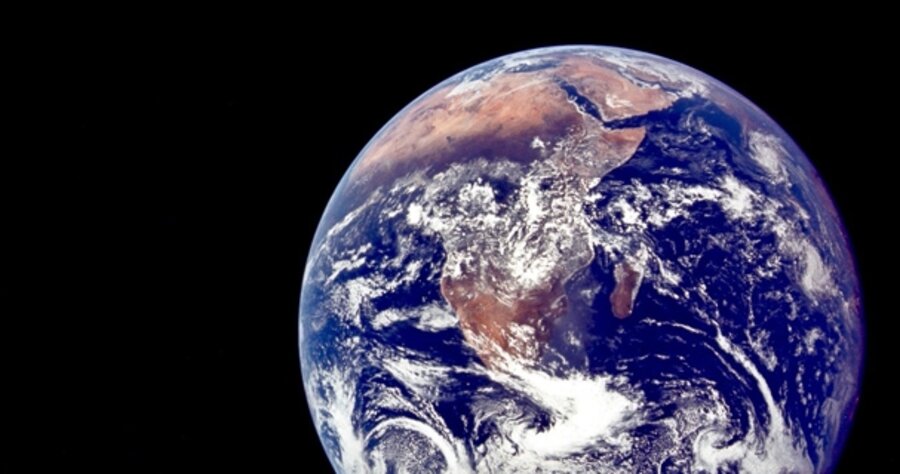A second look at how life began on Earth
Loading...
Scientists who study the rise of earthly life take their work with a grain of salt. They know that reanalysis of old data can jerk their theories around. Two such cases – a new look at some 55-year-old “primordial soup” experiments and a reexamination of the “oldest fossils” of photosynthetic microbes – illustrate this point.
In 1953, the late Stanley Miller published what became the most famous experiments in pre-life biochemistry. He discharged electric sparks through mixtures of ammonia, hydrogen, and methane, which he thought were abundant in Earth’s early atmosphere. This effort produced chemical residues containing amino acids, which are the building blocks of proteins. That made a good case for believing that lightning in the early atmosphere literally sparked a chemical reaction that eventually led to organic life itself. But as early Earth research progressed, geophysicists came to doubt that the primitive atmosphere had the mix of chemicals Mr. Miller’s experiments assumed.
Fast forward to the 21st century. When Miller died last year, Jeffrey Bada at Scripps Institution of Oceanography in San Diego and Adam Johnson at Indiana University in Bloomington found vials containing dried chemical residues from the original experiments among Miller’s effects. Dr. Bada says it was “a great opportunity to reanalyze these historic samples using modern methods.”
Mr. Johnson, Bada, and several colleagues explained two weeks ago in Science that they were especially interested in experiments in which Miller had added steam to the gas mix. This simulated lightning discharges in a moisture-rich volcanic eruption which does produce methane, hydrogen, and other gases. The team found more organic compounds in the residues Miller saved from those experiments than Miller himself had detected. They include 22 amino acids, 10 of which have not been seen before in comparable experiments.
Miller may have gotten the primitive atmospheric composition wrong. But he was right about volcanic plumes. Once again, some of his classic experiments offer reason to believe that lightning flashing through primordial gases may have provided the energy to form chemical precursors of organic life.
Another important assumption in earthly life research was corrected after a reanalysis of “evidence” for the rise of photosynthesis. Birger Rasmussen at Australia’s Curtin University of Technology in Perth and several colleagues have been using powerful modern microprobe technology to look at what was thought to be the earliest fossil evidence of oxygen-producing photosynthesizing microbes.
They were found in 2.7-billion-year-old shales from Australia’s Pilbara Craton. Scientists have wondered why it took another 300 million years to enrich the atmosphere with oxygen. Dr. Rasmussen’s team explained in Nature last week that there is no such discrepancy. Their sharper view of the fossils show that they actually are remains of subsequent intrusion of external chemicals into the shale. The oldest reliable fossil evidence for photosynthesis is no earlier than 2.15 billion years ago, when atmospheric oxygen began to rise.
Scientists sometimes wonder if incoming cosmic debris seeded Earth with life that arose elsewhere. If they ever find evidence for that, it will really jerk their theories around.





